In this issue, we will be covering:
- Feature Article: Incident investigations: What to investigate and why.
- Company fined after employee dies in telehandler accident.
- Product Feature: Operator Compliance Packages.
- Upcoming Program Calendar.
- Gates With Toe Boards.
- Ask Bob: Our tech guru answers a question on fork capacity requirements.
- A selection of interesting articles.
- New testimonials from our wonderful clients.
But first, check out all the places we are delivering training this month...
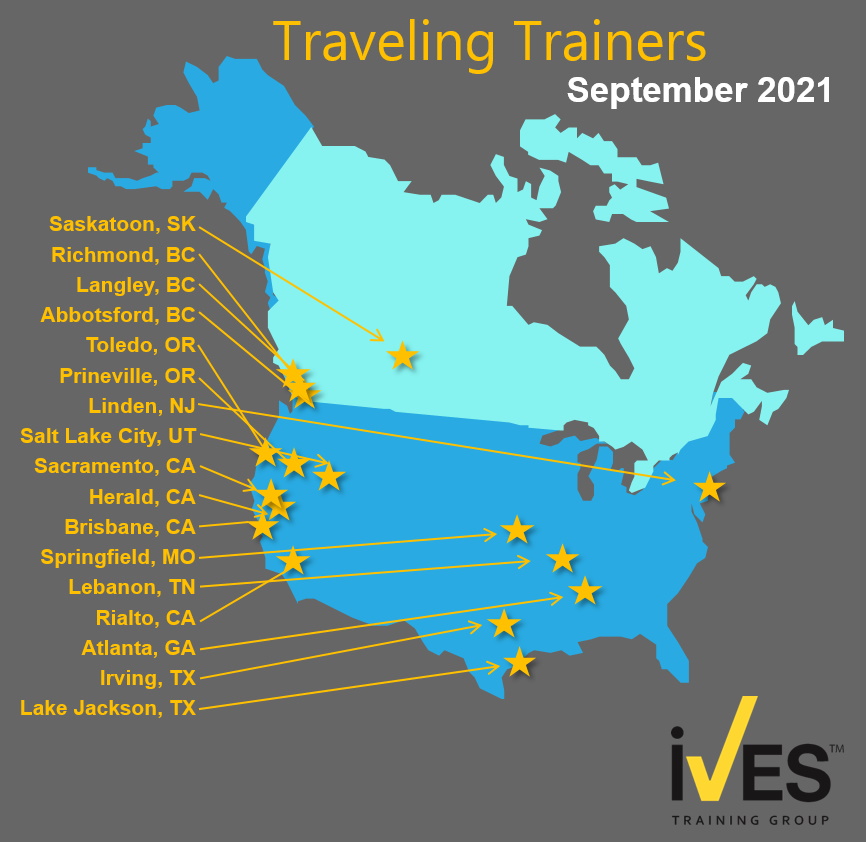
Incident investigations: What to investigate and why.
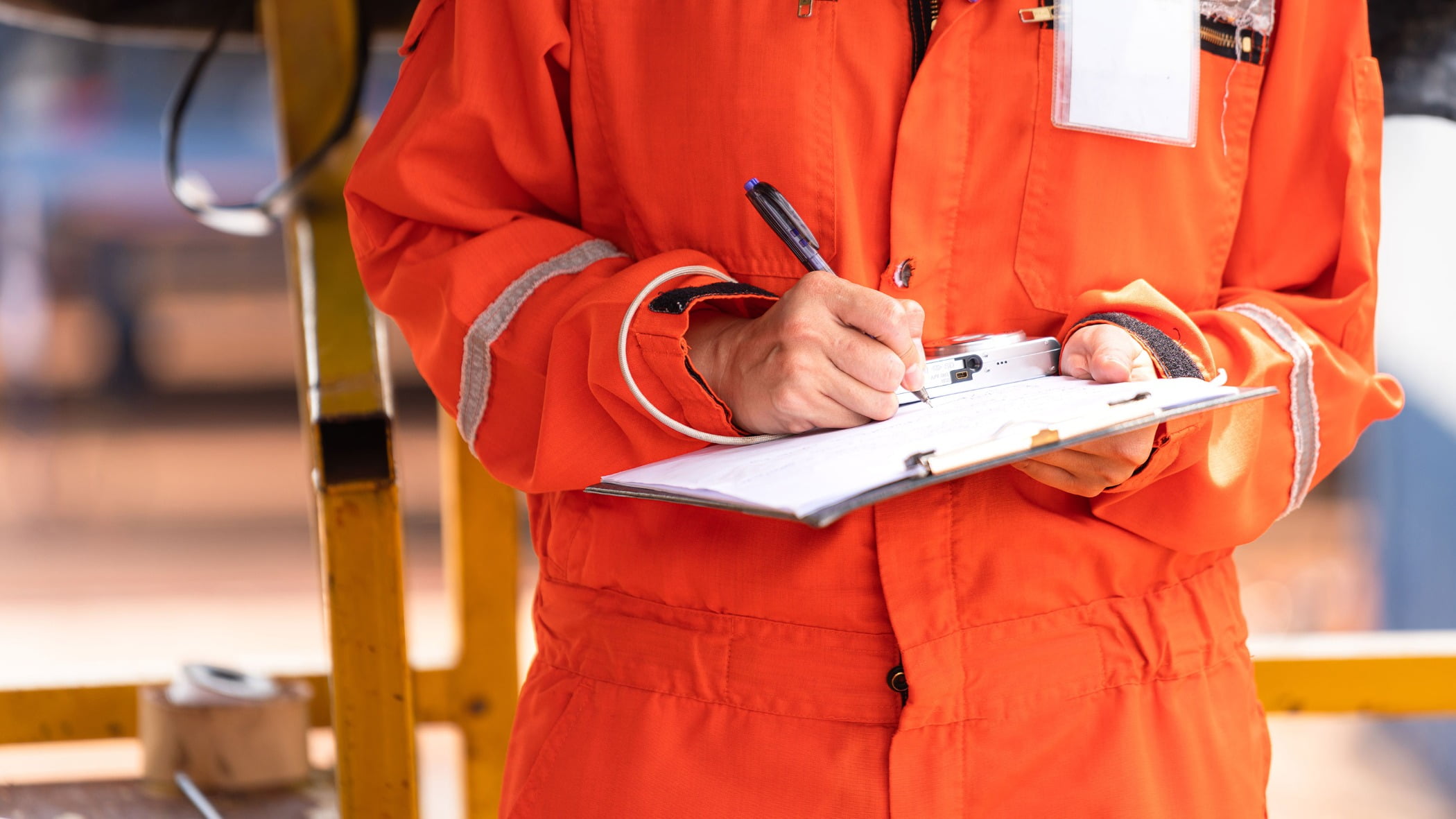
Incident investigations are a critical part of your safety program and safety culture. When an incident occurs, when and how you address it is equally as important as what you address and why. If you “tell” employees that safety is important but fail to “show” your commitment through prompt and thorough investigations of incidents, you de-value your word and lose face with your people.
OSHA defines an incident as "an unplanned, undesired event that adversely affects completion of a task." In the past, the term "accident" was used to refer to an unplanned, unwanted event. To many, "accident" suggests an event was random and could not have been prevented. Since nearly all worksite fatalities, injuries, and illnesses are preventable, OSHA now suggests using the term "incident" ( a term I have used for 25 years) to address any event in which an unwanted outcome occurs. This includes injury, illness, property damage, or near-miss (I prefer, “near-hit”), otherwise known as a close-call.
When an incident occurs, it is an indication that something has gone wrong. Incidents do not just happen; they are caused. The basic cause(s) of an incident is from one or a series of unsafe acts and/or conditions that sets up circumstances leading to that undesired event. The primary purpose for conducting an investigation for every incident is to determine the cause and initiate corrective action(s) that prevent similar type incidents from recurring. Certainly, the level or depth of an investigation – the amount of detail and effort needed - will vary, depending on the incident. Bear in mind that what may initially appear to be an insignificant event on the surface may shed light on a serious condition or practice that needs immediate attention. What is important, then, is for each incident to get your attention and prompt evaluation.
So, we investigate all incidents, whether an injury or property damage has occurred or not, because the root cause and contributing factors that led to the incident could result in a similar incident leading to the ultimate undesired event - a fatality.
Let me be clear: the purpose of an incident investigation is to always identify, address, and correct actions and/or conditions that can lead to a fatal or serious injury. Your employees are most important. The point of the investigation should always be a reinforcement to your employees that it is about improving their safety – both performance and working conditions. The goal of investigating a property damage incident is not to focus on what was damaged or the cost of the damage; the goal is to identify the root cause of the damage to prevent someone from being killed or seriously injured. In other words, it is about improving your safety culture and safety performance at all levels within the organization.
Investigating a worksite incident provides employers and workers the opportunity to identify hazards in their operations and shortcomings in their safety and health programs. Most importantly, it enables employers and workers to identify and implement the corrective actions necessary to prevent future incidents.
The focus is on identifying and correcting root causes, not finding fault or blame. I have never liked the term, “behavior-based safety.” Whether intended or not, the outcome to behavior-based safety investigations often ended in finding a scapegoat rather than the root cause. Throughout my career, I have addressed safety through integrated performance – including processes, procedures, and employee practices. Looking at the whole picture, from how the process(es) work, what procedures are currently in place and the accuracy of those procedures, to how and why employees practice or follow those procedures, will reveal what went wrong, what caused the undesired event, and how to address it, going forward.
To ensure a thorough investigation, you need multiple people involved. A cross-functional team works best by including the involved employees, the supervisor, the safety department, and may include human resources, maintenance, and engineering. Multiple perspectives and input should be sought to drill down to the actual root cause(s) and contributing factors that led to the incident and ensure findings lead to accurate and prompt correction(s). This may involve changing a procedure. The size of your team will depend on the incident.
There are numerous benefits to investigating all of your incidents. Mentioned earlier, it demonstrates to your employees that safety is a value rather than a changing priority of circumstances. It will also improve workplace morale, increase productivity, increase your employee engagement and participation, and the obvious – identify hazards, whether conditions or practice, processes or procedures – and allow you to eliminate or reduce the hazard while safeguarding your employees through process and procedure review and employee practices that may need to be adjusted. Incident investigations are critical to your safety culture and benefit your employees and your reputation. Understanding that connection will ensure your investigations have value.
Company fined after employee dies in telehandler accident.
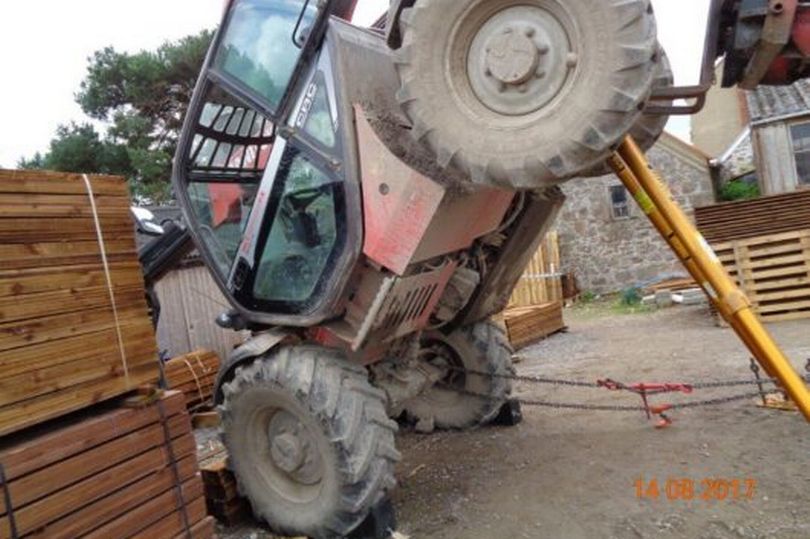
A Bristol fencing manufacturer, and the owner of the yard where the business operates, have been fined following the death of an employee at the site.
North Somerset Magistrates’ Court heard how on August 14, 2017, Roderick McKenzie Hopes was working for PA Fencing Ltd at the yard.
A telescopic forklift (telehandler), used to move timber, was lifted too high. It tipped over, knocking over some stacked timber which fell on to Mr Hopes resulting in his death.
An investigation by the Health and Safety Executive (HSE) found that the telehandler’s safety device, designed to stop loads being lifted so high, had not worked for a long time and maintenance had failed to identify this.
Furthermore, the machine operator had not received full training in its use and the machine was regularly used to lift overly heavy loads, the HSE said.
The yard supervisor did not know how the machine should be used safely. The yard wasn’t laid out to allow the safe stacking of material.
The investigation also found that PA Fencing Ltd shared the machine with Mr David Crossman, who owns the neighbouring farm and rents the yard to PA Fencing Ltd.
Neither PA Fencing Ltd nor Mr Crossman had ensured that the machine was properly maintained nor that it was independently thoroughly examined, a test which must be done at least annually.
P A Fencing Limited of Unit 4 Westfield Business Park, Bristol, pleaded guilty to breaching Section 2(1) of the Health & Safety at Work Act 1974.
The company was fined £35,000($48,454 USD) and ordered to pay costs of £7500 ($10,383 USD).
David Crossman of Ham Farm, Ham Lane, Yatton, pleaded guilty to breaching Regulation 5(1) of the Provision and Use of Work Equipment Regulations 1998 and Regulation 9(3) of the Lifting Operations and Lifting Equipment Regulations 1998 and was fined £3000 ($4,154 USD) and ordered to pay costs of £7500 ($10,383 USD).
Speaking after the hearing HSE inspector Tania Nickson said: "This incident could so easily have been avoided by simply ensuring that the vehicle in question had been properly maintained and thoroughly examined.
"This failure was compounded by PA Fencing Ltd not ensuring their yard was set up to safely store timber or that their drivers were properly trained and appropriately supervised.
"Companies should be aware that HSE will not hesitate to take appropriate enforcement action against those that fall below the required standards."
Product Feature: Operator Compliance Packages
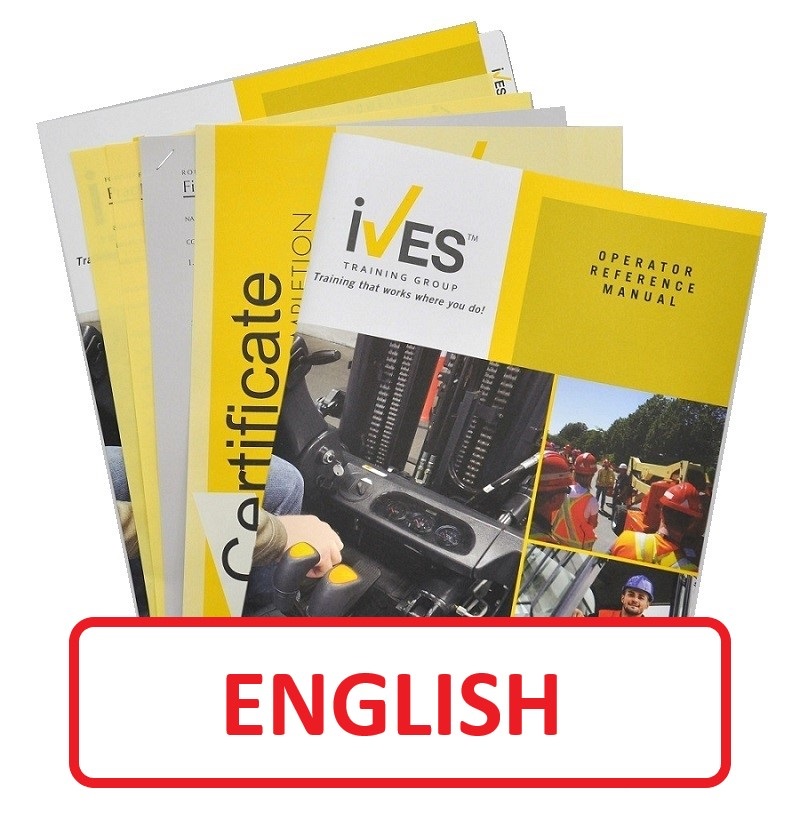
Operator Compliance Packages contain an equipment-specific operator reference manual, operator theory test, practical evaluation form, certificate of completion and certification folder with data sheet and operator wallet card – enough material to train and document that process for one operator.
Operator Compliance Packages are available for counterbalanced forklifts, narrow aisle forklifts, powered pallet trucks, rough terrain telehandlers, aerial boomlifts, scissor lifts, front-end loaders, loader backhoes, skid-steer loaders and excavators.
Parlez-vous français? ¿Hablas español?
Select packages are also available in French and Spanish.
Gates With Toe Boards.
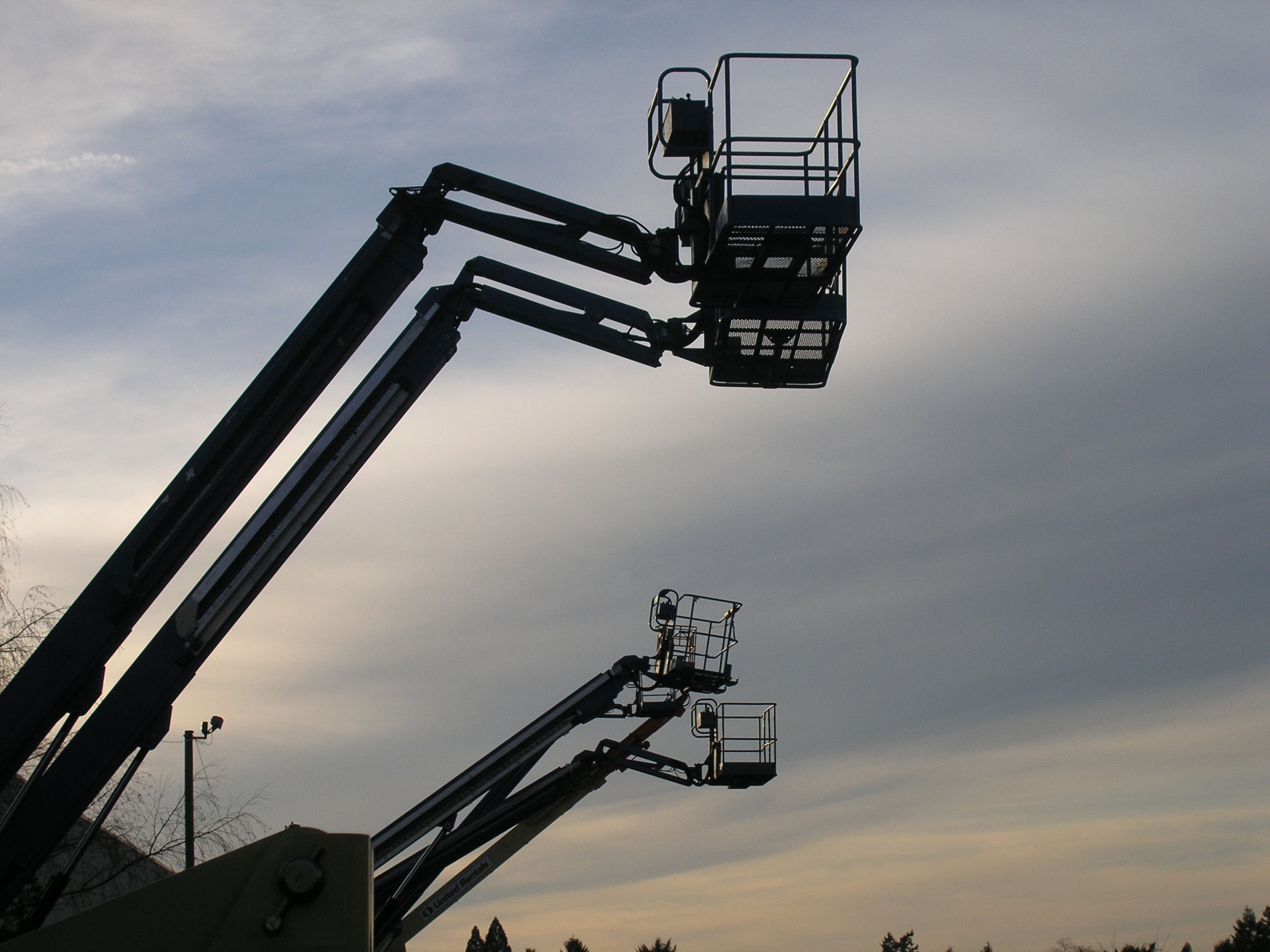
There is no argument to the fact that work must be performed at height.
Some people think of aerial lifts as being a sophisticated piece of equipment exclusive to the construction industry. This could not be farther from the truth.
Trade workers, photographers, small business owners, filmmakers, and others utilize mobile elevating work platforms (MEWPs) to enhance their business.
So, what brought about the need for the access industry to re-evaluate the traditional chain so common on 3a or 3a+ vertical scissor lifts? Injury of course!
Falls are and have been for nearly a decade the number one cause of injury and death, not just in America but across the global construction industry. Scissor lifts do not have the same requirements for fall protection that 3b or 3b+ articulating/straight booms have.
The reasons for that distinction in fall protection requirements comes down to a deeper understanding of the hazards associated to both classes of equipment.
Some MEWPs require personal fall protection equipment, and some do not. The access industry has realized that the weakest link in their chain of safety was the chain at the entry gate!
Two Groups of Fall Protection
Understanding the terminology is important when making decisions about a rental or purchase. There are two groups of fall protection, active and passive.
• Active fall protection = Dynamic systems that contain moving parts.
- Restraint – Prevented from reaching an area of risk, restrained from the edge.
- Positioning – Positioned securely through tension or suspension in an area of risk.
- Arrest – Prepared by utilization of fall protection systems (FPS) that only limit the impact force in an area of risk.
• Passive fall protection = Non-dynamic systems that are stationary.
- Stair rails and guardrails – Prevent a fall through permanent installation.
- Barricades and scaffolding – Positioned temporary systems.
- Safety netting – Prepared to absorb and contain.
Based on this terminology, the entry gate is a form of passive fall protection that allows prevention of falls like a restraint system with active fall protection methods. Not many people looked at passive protection in this light. However, it was this innate understanding that led to the change.
In early 2000, members of the European Committee for Standardization (CEN) EN280 Committee desired to increase the safe use of elevated work platforms.
In 2009, CEN published new rule making for MEWPs, including design calculations, stability criteria, construction, safety, examinations, and tests (citation: prEN 280:2009 (E), CEN/TC 98 2009-02). That is when the first change came about.
The rule was clear: “Chains or ropes shall not be used as guard-rails or access gates. Verification – by visual examination.”
The American National Standards Institute (ANSI) was soon to follow. Work began and discussion led to the creation of 10 sections within a new suite of standards specific to the same issue. Employers and users of aerial equipment designed to comply to ANSI/Scaffold & Access Industry Association (SAIA) A92.20-2020, however, are not required to retroactively make changes to equipment manufactured before June 1, 2020, the effective date of the standard.
What You Need to Know!
- Access entry points must have a toe-board.
- Swing gates will be much more common.
What Does the ANSI/SAIA A92.20 Standard Say?
- 4.6.6.1 Any opening in the floor or between the floor and toe guards or access gates shall be dimensioned to prevent the passage of a sphere of 15 mm (.59 in) diameter. 4.6.7 Chains or ropes shall not be used as guardrails or access gates.
- 4.6.7 Chains or ropes shall not be used as guardrails or access gates. A popular solution for manufacturers has been a fixed bar across the top of the aft end of the rails with a half gate that opens on the bottom. This solution can be seen on scissor lifts with folding rails.
So be on the lookout going forward. Dayby-day, saloon-style gates and cantilevers entries will be much more prevalent than chains.
Being informed is key. Understanding that the new standards are not retroactive will give insight into how to handle a machine that arrives on your jobsite.
The aftermarket industry is full of resources by the original equipment manufacturing (OEM) community to provide ways to use older machines safely.
To learn more, be sure to purchase and review the most recent ANSI/SAIA standards and to have on hand the SAIA Manual of Responsibilities.
Give your partner in safety a call and join the SAIA at its 2021 Annual Convention & Exposition to be introduced to a room full of passionate SAIA members.
Source:
Scaffold & Access Magazine
Ask Bob

Free technical support for all IVES Certified Trainers!
Question:
Hi Bob!
Could you tell me where the requirement for the combined ratings of the forks must be at least equal to the trucks lifting capacity comes from?
I'm researching this for a client and it certainly makes sense but I'm looking to find if there is a specific standard or regulation that I can refer to that spells this out?
Answer:
The fork capacity requirements are spelled out in the ANSI B56.1 standards. You can download these for free from
www.itsdf.org.
I always suggest to all trainers that deal with industrial forklifts to download and put these standards in their trainer’s manuals behind their regulations. If you deal with telehandlers too, I would also suggest you download B56.6.
ANSI B56.1 (2018)
6.2.8 Inspection and Repair of Forks in Service on Fork Lift Trucks
(a) Forks in use shall be inspected at intervals of not more than 12 months (for single shift operations) or whenever any defect or permanent deformation is detected. Severe applications will require more frequent inspection.
(b) Individual Load Rating of Forks. When forks are used in pairs (the normal arrangement), the rated capacity of each fork shall be at least half of the manufacturer’s rated capacity of the truck, and at the rated load center distance shown on the lift truck nameplate.
Interesting Articles
- VIDEO: Team 18 executes forklift pit stop...more.
- Man dies in fall while trimming trees from a boomlift...more.
- Company fined $167K after employee dies due to accident on forklift...more.
- VIDEO: One fatality and one injury as aerial lift comes into contact with electrical wire...more.
- Worker injured on construction site after material from forklift falls...more.
- Man jumps clear of boomlift...more.
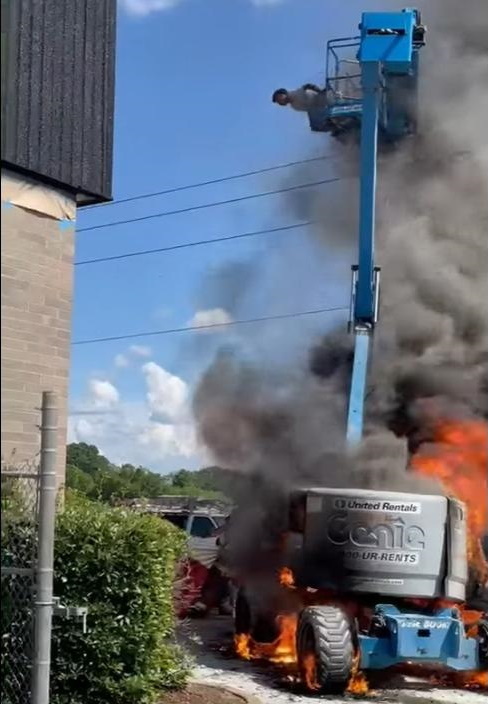
Client Testimonials

"I really enjoyed the clear, logical way this program was delivered, no pressure was felt, and every topic discussed until it was clear" Keinan, BCLDB.
"Hands down – best training program I have ever been a part of. Thank you." Stephen, IRL Construction LTD.
"The IVES training program is very user (trainer) and trainee friendly. The IVES program does set the standard for equipment training." Jamie, SBS.